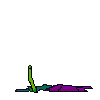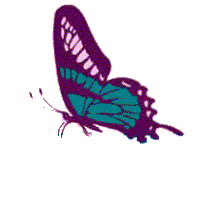|
|
!!!Welcome !!! |
|
||||||||||||||
 |
1. Confirm the diagnosis by radiographic studies
(the diagnosis of approximately 20% of patients with achondroplasia
has been missed in the past, because it was not suspected on physical
examination in the newborn period and consequently no radiographs
were obtained).
2. Document measurements, including arm span, occipital frontal circumference (OFC), body length, and upper to lower body segment ratio. Review the phenotype with the parents and discuss the specific findings with both parents whenever possible. 3. The OFC should be measured monthly during the first year. Ultrasound studies of the brain to determine ventricular size should be considered if the fontanelle size is unusually large, OFC increases disproportionately, or symptoms of hydrocephalus develop. Anticipatory guidance -- Autosomal dominant inheritance. About 75% of cases are new mutations. Germline mosaicism (in which some germ cells are derived from a normal cell line and some are from a cell line with a mutation) has been reported, but clearly the risk of recurrence in sporadic cases is far below 1%. -- Most individuals with achondroplasia have normal intelligence and normal life expectancy. -- Growth hormone and other drug therapies are not effective in increasing stature. Experimental work is being done on leg-lengthening procedures at an older age [10, 11]. -- Special achondroplasia growth curves and infant development charts have been developed, and the final expected adult height for persons with achondroplasia is in the range of about 4 ft [4]. 2. Discuss the following possible severe medical complications: -- Unexpected infant death in less than 3% of those affected, usually only in the most severe cases [12]. Severe upper airway obstruction in less than 5% of those affected, but consider sleep studies if there appears to be a problem with breathing at rest or during sleep, especially if developmental landmarks lag [13]. -- Restrictive pulmonary disease with or without reactive airway disease occurs in less than 5% of children with achondroplasia who are younger than 3 years [13]; consider pulse oximetry or evaluation for cor pulmonale if there are signs of breathing problems. -- Development of thoracolumbar kyphosis is associated with unsupported sitting before there is adequate trunk muscle strength [14]. -- All infants with achondroplasia have a relatively small foramen magnum, but few become symptomatic from cord compression at the cervicomedullary junction [15]. This complication may be manifested by signs and symptoms of a high cervical myelopathy, central apnea, or both [16]. Rarely, formamen magnum decompression may be recommended. -- Hydrocephalus may develop during the first 2 years [17], so OFC size should be monitored carefully during this time. If a problem is suspected, refer the infant to a pediatric neurologist or pediatric neurosurgeon. -- The common complication of spinal stenosis rarely occurs in childhood but manifests in older individuals with numbness, weakness, and altered deep tendon reflexes [18]. Children with severe thoracolumbar kyphosis are at greater risk for this problem. It is for this reason that unsupported sitting before there is adequate trunk muscle strength is discouraged. 3. Discuss the psychosocial issues related to disproportionate short stature. Refer the affected individual, or the parent of an affected individual, to a support group such as Little People of America or Human Growth Foundation (see ÒResources for New ParentsÓ). If parents do not wish to join a group, they may want to meet with or talk to other affected individuals or parents. Remind parents that most individuals with achondroplasia lead productive, independent lives. 4. Discuss with the parents how to tell their family and friends about their childÕs growth problem. 5. Supply the parents with educational books and pamphlets (see ÒResources for New ParentsÓ). 6. Discuss the realistic functional problems for affected individuals. 7. Discuss individual resources for support, such as family, clergy, social workers, and friends. 8. Review the prenatal diagnosis and recurrence risks for subsequent pregnancies. |
 |
||||||||||||
More Expression Web templates
|
||||||||||||||
|
Copyright Achondroplasia UK. All Rights Reserved www.achondroplasia.co.uk |
||||||||||||||
